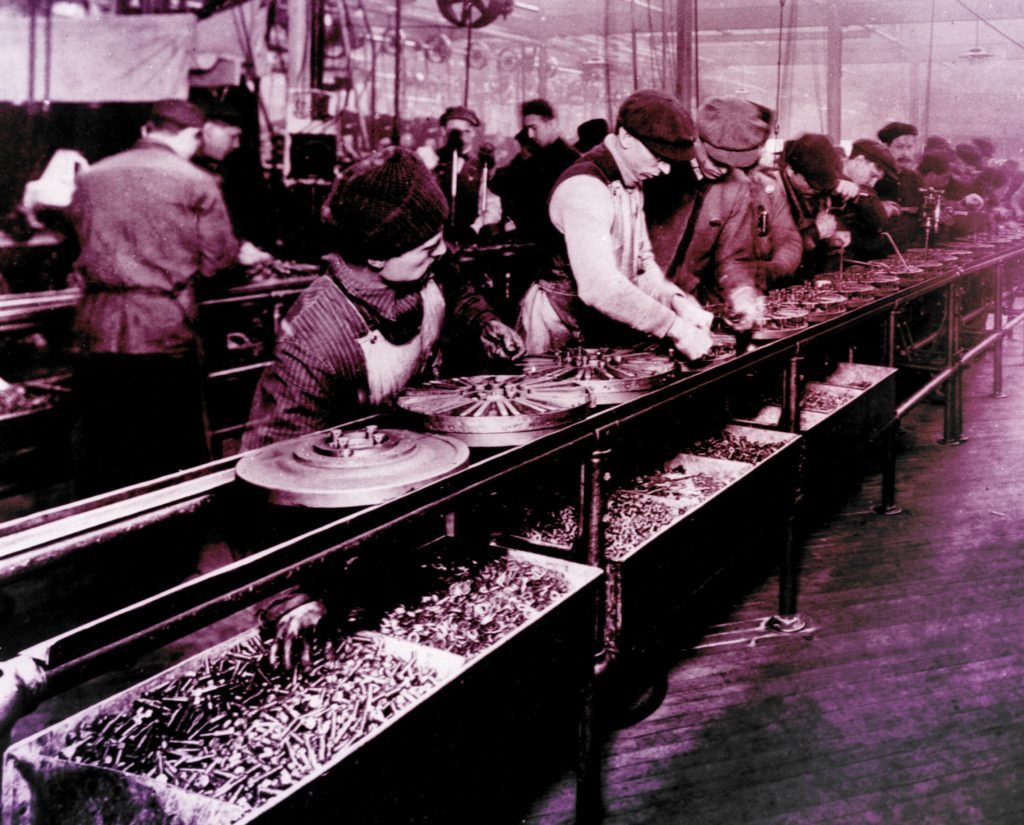Here are 7 types of Explain Techniques of Scientific Management, Study and Learn!
Here are 7 types of Explain Techniques of Scientific Management, Study and Learn! Some of the major techniques of scientific management are as follows: 1. Work Study 2. Standardization of Tools and Equipment’s 3. A Scientific Task Setting 4. Scientific Setting of Wage Rates 5. The Scientific Selection and Training 6. Functional Foreman-ship 7. Differential Piece-Rate Plan. Also, learn; What are the Principles of Scientific Management?
Following Explain Techniques of Scientific Management here are:
1. Work Study:
Work study implies an organized, objective, systematic, analytical and critical assessment of the efficiency of various operations in an enterprise. It is a generic term for those techniques which are used in the examination of human work in all its context and which lead systematically to the investigation of all factors which affect the efficiency and economy of operations.
It is a technique which enables the manager to ascertain standard time taken for performing a specified job. Every job or every part of it is studied in detail. This technique is based on the study of an average worker having reasonable skill and ability. Average worker is selected and assigned the job and then with the help of a stop watch, time is ascertained for performing that particular job. Taylor maintained that Fair day’s work should be determined through observations, experiment and analysis by keeping in view an average worker.
Work-Study includes the following techniques:
(а) Method Study:
This study is conducted to know the best method of doing a particular job. It helps in reducing the distance travelled by materials, and brings improvement in handling, transporting, inspection and storage of raw materials and goods.
(b) Motion Study:
Motion study is a technique which involves close observations of the movement of body and limbs of an individual required to perform a job. It is the study of the movement of an operator or a machine to eliminate useless motions and find out the best method of doing a particular job. By undertaking motion study, an attempt is made to know whether some elements of a job can be eliminated, combined or their sequence changed to achieve the necessary rhythm.
The purpose of motion study is (i) to find and eliminate wasteful motions among the workers, and (a) to design the best methods of doing various operations. It leads to increase the efficiency of workers by reducing fatigue and manual labor. It results in higher production and productivity.
(c) Time Study or Work Measurement:
Time study is the technique of observing and recording the time required by a workman of reasonable skills and ability to perform each element of the tasks in a job. Through time study, the precise time required for each element of a man’s work is determined. It helps in fixing the standard time required to do a particular job.
The purpose of time study is to scientifically determine the standard time for doing a job under given condition. It helps to measure the efficiency of workers. It creates time consciousness among workers. Saving in time leads to cost reduction and increased efficiency.
(d) Fatigue Study:
A Fatigue, physical or mental, has an adverse effect on the worker’s health and efficiency. The Fatigue study helps in reducing fatigue among the workers. The Fatigue is generally caused by long working hours without rest pauses, repetitive operations, excessive specialization, and poor working conditions. The purpose of fatigue study is to maintain the operational efficiency of the workers.
2. Standardization of Tools and Equipments:
Taylor advocated standardization of tools and couplings, cost system and several other items. Efforts should be made to provide standardized working environment and methods of production to the workers. Standardization would help to reduce spoilage and wastage of materials, improve quality of work, reduce cost of production and reduce fatigue among the workers.
[amazon_link asins=’0735210624,150019090X,B001DF7HE8,1456315013,0979398614,1112304436′ template=’ilearnlot-ProductCarousel’ store=’ilearnlot-20′ marketplace=’US’ link_id=’9f54e44e-f9ef-11e7-809d-533e08bad68b’]
3. Scientific Task Setting:
It is essential to set a standard task which an average worker source does during a working day. Taylor called it a fair day’s work. He emphasized the need for fixing a fair day’s work because it will prevent the workers from doing work much below their capacity. The standard task will act as a norm before the workers. If no standard is set, the workers will work below his capacity.
4. Scientific Setting of Wage Rates:
Wage rates should be fixed in such a way that he average worker is induced to attain a standard output. Taylor suggested the differential piece- wage system. Under this system, higher rates are offered to those workers who produce more than the standard quantity. Taylor was of the view that the efficient workers should be paid, from 30% to 100% more than the average workers.
5. Scientific Selection and Training:
The management should design scientific selection procedure so that right men are selected for the right jobs. The first step in scientific selection is determining the jobs for which workers are required. After that the most appropriate qualification, training, experience and the level of efficiency for the requisite post are determined. Employees are selected according to predetermined standards in an impartial way. Making the Feedback Training Method Work.
6. Functional Foreman-ship:
Taylor advocated that specialization must be introduced in a factory. He advocated ‘functional foreman-ship’ for this purpose. Functional foreman-ship is a form, of organization which involves supervision of a worker by several specialist foremen. For instance, matters relating to speed of work and repairs of machinery will be supervised by the speed boss and the repair boss respectively.
The purpose of functional foreman-ship is to improve the quality of supervision of workers by employing specialist foremen. Taylor believed that a single foreman is not competent to supervise all functional matters. How to Processes of Scientific Management?
In Taylor’s functional foreman-ship, planning is separated from execution. He recommended eight foremen in all to control the various aspects of production. He suggested four foremen m the planning department, namely, route clerk, instruction card clerk time and cost dark and shop disciplinarian. The four foremen recommended for getting the required performance from the workers include gang boss, speed boss, repair boss and inspector.
Understand by Chat; Functional Foreman-ship

- Taylor advocated functional foreman-ship for achieving ultimate specification.
- This technique was developed to improve the quality of work as single supervisor may not be an expert in all the aspects of the work.
- Therefore workers are to be supervised by specialist foreman.
- The scheme of functional foremanship is an extension of principle pf specialization at the supervisory level.
- Taylor advocated appointment of 8 foramen, 4 at the planning level & other 4 at implementation level.
- The names & function of these specialist foremen are: –
- Instruction card clerk concerned with tagging down of instructions according to which workers are required to perform their job
- Time & cost clerk is concerned with setting a time table for doing a job & specifying the material and labor cost involved in it.
- Route clerk determines the route through which raw materials has to be passed.
- Shop Disciplinarians are concerned with making rules and regulations to ensure discipline in the organization.
- Gang boss makes the arrangement of workers, machines, tools, workers etc.
- Speed boss concerned with maintaining the speed and to remove delays in the production process.
- Repair boss concerned with maintenance of machine, tools and equipments.
- Inspector is concerned with maintaining the quality of product.
7. Differential Piece-Rate Plan:
This plan was suggested by Taylor to attract highly efficient workers. Under this plan, there are two piece work rates, one is lower and another is higher. The standard of efficiency is determined in terms of number of units during a day or standard same. The worker who produces more than standard output within the standard time.
He will be given higher piece rate. On the other hand, if a worker is below the standard, he shall be given lower rate of wages. The slow worker is thus penalized as he gets wages at a lower piece rate. Thus Taylor’s scheme of wage payment encourages the workers to attain higher standard of performance and earn wages at higher rate. Also, read it; Seven Researchers or Pioneers of Management.

Reference
1. Techniques of Scientific Management – //www.managementstudyguide.com/techniques_scientificmanagement.htm
2. 7 Techniques of Scientific Management – //www.yourarticlelibrary.com/scientific-management/7-techniques-of-scientific-management-explained/27889
3. Photo Credit URL – //emhs.org.au/files/images/content/1925_Philadelphia_Atwater_Kent_radio_set_assembly.jpg





